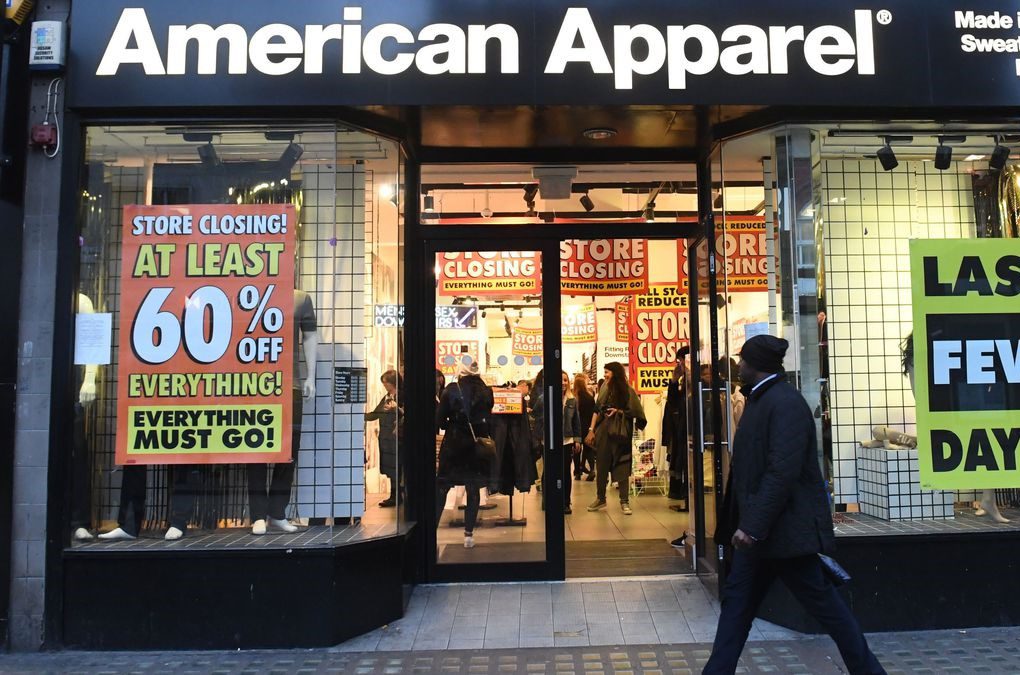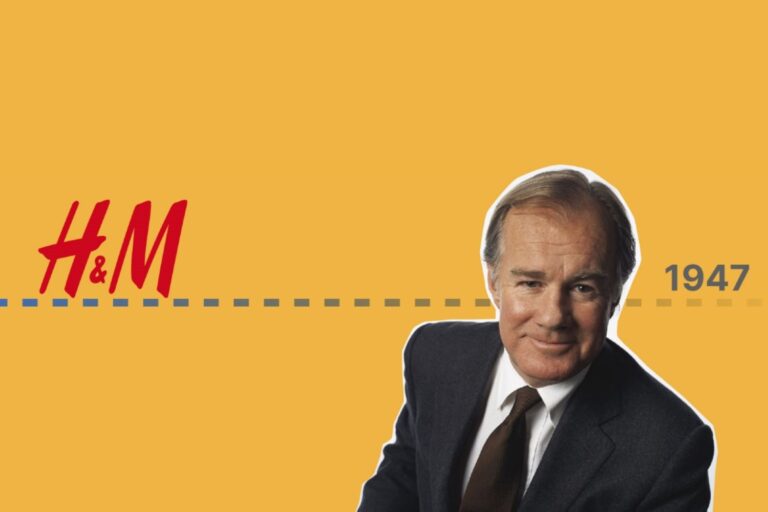American Apparel’s Downfall and Lessons You Don’t Want to Repeat in Business Execution
Founded by Canadian businessman Dov Charney in 1989, American Apparel was a vertically integrated company that ranked as one of the largest apparel manufacturers and marketers in North America. But after losing money for six consecutive years, American Apparel filed for Chapter 11 bankruptcy in the U.S. on October 5, 2015 in the United States Bankruptcy Court for the Central District of California.
Through the story of American Apparel, there are so many lessons here for aspiring start-up founders. How come a brand like American Apparel that once stood for something that mattered to so many people have let itself and its workers down and ended up with so many problems? Let’s look at some of the key reasons for the downfall of a brand that once showed so much promise and see if we can help founders starting out on a similar journey avoid making the same mistakes.

The Making of American Apparel: An All-American Brand
As a teenager from Montreal, Dov Charney was obsessed with American T-shirts, which were higher quality and cost less than Canadian shirts. Charney dropped out of college and in 1991 started manufacturing T-shirts. Soon he would begin making shirts with a tighter cut and better fit than the standard oversized tee. In 1997, 28-year-old Charney moved to Los Angeles and started a wholesale T-shirt business. Initially, American Apparel T-shirts were produced in Mexico, but Charney moved the manufacturing to L.A. By 2001, sales in American Apparel hit $20 million. Soon, the company started selling directly to consumers. American Apparel’s first store opened in 2003 in Los Angeles. And in 2004, the company started selling online. The brand stocks basics like zip-up hoodies and knit tees. The company’s principal competitors were Fruit of the Loom, Hanes Brands and VF Corp., which owns Van’s, the North Face and other brands. By the end of 2005, the company had about 60 stores; half in the U.S. and half international. That same year, the company pulled in revenue of more than $275 million.
But that was not enough for Charney. He wanted the company to be even bigger. One way to get there was through expansion into even more locations overseas. Charney wanted to be in all the global capital cities: Paris, Berlin, Beijing, Mexico City and more. Soon, canvas tote bags listing international cities became a symbol of the brand. But despite its rapid expansion abroad, 2005 was a rough year at home for American Apparel. Sales growth at stores open for more than a year slowed.

To try to shore up the company’s growth, American Apparel was sold to an investment firm called Endeavor Acquisition in 2006. The company was purchased for over $800 million in stock, cash, and assumption of debt. Endeavor acquisition was already a public company when it bought the retail business and it started operating under the name American Apparel Inc. in 2007. As a public company, American Apparel sales grew seven out of the nine years it was a public company. It went private again in 2016, but the company was not always profitable. The last time it turned a profit was in 2009. That’s also the year the company started closing more stores than it opened, shrinking its footprint.
American Apparel CEO Dov Charney Fired
Charney was determined to make American Apparel a global brand. But after his board fired him in 2014, Charney’s priorities changed. He He just wanted to get his business back. In June 2014, the board of American Apparel ousted Charney, saying he had misused company funds and failed to prevent an employee from publishing nude photos of another employee online. Charney had been mired in controversy for years. In 2005, he was at the center of sexual harassment lawsuits and later was accused of sexual misconduct and inappropriate workplace behavior. It’s not normal for the board and shareholders of a publicly owned company to have to watch a video on YouTube of their chief executive dancing naked in front of female colleagues and wonder what to do about it.

Including using ethnic slurs against workers and keeping videos on a company server of himself in sex acts with employees. Charney has denied claims of sexual harassment. In a 2015 statement to Reuters, Charney’s lawyer said “He was fired because he wouldn’t relinquish control of his company.” In June 2015, American Apparel was granted a restraining order against Charney, temporarily preventing him from making negative statements in the press against the company and its employees. Charney teamed up with an investor group announced $300 million to acquire American Apparel in 2016, but ultimately failed.
American Apparel’s Downfall and Lesson Learned
It grew fast in the early 2000s, but after 2008, the company faced huge problems it couldn’t overcome. After Charney’s firing, the then board of directors hired a new CEO, Paula Schneider to lead a turnaround plan. She was going to increase sales by introducing seasonal apparel, developing more online business, and improving quality. But soon it was apparent that American Apparel didn’t have the cash to implement the changes.
American Apparel filed for Chapter 11 bankruptcy protection in October 2015, carrying almost $300 million worth of debt. American Apparel received a bit of $300 million from a group of investors backing Charney’s return, but it wasn’t accepted. The company emerged from bankruptcy in February 2016 after being purchased by a hedge fund. Eight months later, Snyder resigned, after two years on the job. In November 2016, the company filed for bankruptcy protection a second time with about $177 million in debt. Increased competition from online and other teen retailers, mixed with slumping sales, hurt the brand.
A brand like American Apparel once had a strong identity and morals lost its way from the top down, ultimately leading to its demise through an acquisition and shuttering of its retail stores. We have outlined lessons that can be learnt from this company.
#1: Made-in-USA Strategy and Employees Lost
Charney wanted everything American Apparel sold to be made in the U.S. That stance set the company apart from competitors, and the phrase “made-in-USA” appeared on many ads. American Apparel was seen as an anomaly in an industry known for dangerous working conditions at extremely low pay. American Apparel paid its workers high wages by industry standards and provided benefits, including healthcare and education resources to workers. In a 2012, Charney said it was more efficient to manufacture in the U.S. closer to a company’s headquarters, and that it was the right thing to do. “I think it’s more consistent with Avant garde morality. Avant garde morality is that no one touched by principles of sustainability. That no one touched by the business process, whether be the environment or a worker, should be damaged by the commerce of the business.” – said Charney.
In 2008, American Apparel employed about 9,700 people. But in 2009, the company faced a huge blow to its productivity, when a federal investigation found irregularities in some employees’ identification paperwork. Over 1,500 of American Apparel’s experienced manufacturing employees were fired following an I-9 inspection by U.S. Immigration and Customs Enforcement. The investigation into the company was part of then President Barack Obama’s policy of reducing illegal immigration by requiring companies to fire unauthorized workers.
Losing those employees led to lower manufacturing efficiency, which the company estimated reduced its operating income by $4.4 million in the first quarter of 2010.
#2: Problem with Financial Health of American Apparel
And there were more risks to the business that year, including its financial health. In American Apparel’s first four years as a public company, its CFO changed several times. Those moves lost trust with investors and made accurate financial reporting difficult, according to 2011 class action lawsuit filed by shareholders. The trouble began in 2008. In an interview with the Wall Street Journal, Charney called his company’s then CFO, Ken Cieply, a complete loser with no credibility, despite giving him a 20 percent raise the previous year. Charney later backpedaled, saying that Cieply had enormous credibility. Cieply quit not long after. The company named 31-year-old Adrian Kowalewski as CFO in 2008. Filings from the 2011 lawsuit allege this move gave Charney more power over managing the company’s finances and other operations with little oversight or accountability.
It hired Deloitte and Touché as its independent auditor in the spring of 2009. The 2011 lawsuit alleges the move was to assure investors about American Apparel’s commitment to best practices in financial reporting. In 2009, American Apparel’s performance seemed strong amid a recession that hit retailers particularly hard. On a March 17th, 2009, conference call with investors, Charney said “We feel our brand and the market segment we serve will allow us to weather the economic storm well.”
But that came crashing down in July 2010 when Deloitte resigned suddenly. The auditor claimed American Apparel management withheld from Deloitte the February 2010 monthly financial statements after the filing of the 2009 10-K. Deloitte warned investors that the 2009 financial statements from American Apparel should no longer be relied upon. After Deloitte resigned, shares of American Apparel fell 14 percent and the FBI and S.E.C. launched investigations. Within weeks of Deloitte’s departure, the company disclosed it received a subpoena from the U.S. Attorney’s Office for the Central District of California.
In the following days, American Apparel stock price fell over 46 percent. In American Apparel’s 2010 annual report, the company cited bankruptcy as a risk factor. But in a 2012, Charney said bankruptcy was not a possibility. “If you had asked me any day, or last thousand days, whether we were going to go bankrupt, I would tell you never. It’s not going to happen. Our business is too strong. It’s too hot. We know what we’re doing. We have too much promise here. We’re not going bankrupt.”
American Apparel’s poor financial situation was compounded by the rising price of cotton. As American Apparel sales were falling, cotton prices more than doubled from 2010 to 2011, weighing down its business and forcing American Apparel to raise prices on some products. By 2012, cotton prices returned to more normal levels, but the damage was already done.
#3: Brand Identity – From Selling T-Shirt to Selling Sex

Controversy was certainly mounting but that was not going to be reflected in a company-wide change of tune. The company’s ads became even racier and more disagreeable – Charney even made occasional cameos.
The ads, themselves, which the company’s former director of marketing and online advertising strategist Ryan Holiday, says “have been provocative and interesting from day one,” are part of the brand’s strategy to compete in a marketplace that was becoming saturated with retailers offering cheap, trend-driven garments and accessories that were being delivered to stores in an increasingly sped up timetable.
Long known for its risqué advertising, American Apparel’s suggestive ads eventually became more overt. Instead of showing a scantily clad girl, American Apparel managed to out do itself by posting online banner ads with fully topless models beginning in 2005, right around the time it started featuring porn stars, like Lauren Phoenix, Faye Reagan, and Sasha Grey, posing as “real girls.”
While street casting is not novel or problematic on its face, and is, in fact, utilized by an array of high fashion brands, after being pioneered largely by Raf Simons in Antwerp, Belgium, in the mid-1990’s, and the Japanese design greats before that, American Apparel took it a step further by allowing Charney to photograph the models himself.
The results were trailblazing. All of the ads shared a candid, amateur vibe – evoking the snapshot aesthetic that Lisette Model pioneered, and which Terry Richardson and Juergen Teller had a strong hand in bringing to the mainstream.
A far cry from the polished, traditionally glamorous ads that big fashion houses were putting out at the time, there were no glammed-up models, professional sets or recognizable faces. Instead, there were a lot of beds, couches, and white walls, and provocatively posed models that looked like the girl next door. As indicated by the British Advertising Standards Authority, the results were also highly controversial, as the ads were often “overly sexual,” “voyeuristic,” and “offensive and irresponsible.”
American Apparel Returns – Focusing on Empowerment and Diversity
But American Apparel did not die in bankruptcy court. American Apparel is back. The brand that spawned myriad copies of its hooded tops with contrasting pull cords in the 2000s before exiting the high street after much fanfare and a high-profile bankruptcy in 2016, became available again online in the UK this week.
The brand is still available online, but with a different owner now. Canadian company Gildan Activewear acquired the brand in 2017 for $88 million. With the acquisition, American Apparel retail stores and U.S. manufacturing plants closed. The company laid off thousands of employees and moved some manufacturing abroad.

When you visit American Apparel online today, it may not look much different from the company Dov Charney founded. The models are fresh-faced wearing body suits and basic tees and solid colors. The website says that the brand is ethically made-sweatshop free. That’s one of the most obvious differences to the original brand.
The new team has brought back a lot of American Apparel’s signature products, including the same branding, street-cast campaigns and items such as bodysuits, disco pants and athleisure jersey basics. The highly sexualized image it cultivated in the latter Charney years, however, is not the epoch Weber and her team wants to resurrect.
“We went back through the archive and it’s very clear where the ads and images were working, and where they just become completely unacceptable. Especially as a woman, I look at those images and I cringe.” It wants to revert to its early image of a cool and inclusive label. “What the brand stood for prior to it becoming overly sexualized and uncomfortable was actually at the forefront of what’s happening now,” says Weber. “Using real girls, showing diversity, fighting for immigration and standing for LGBTQs was being done by American Apparel long before anyone else figured out that there was a commercial value there.”









